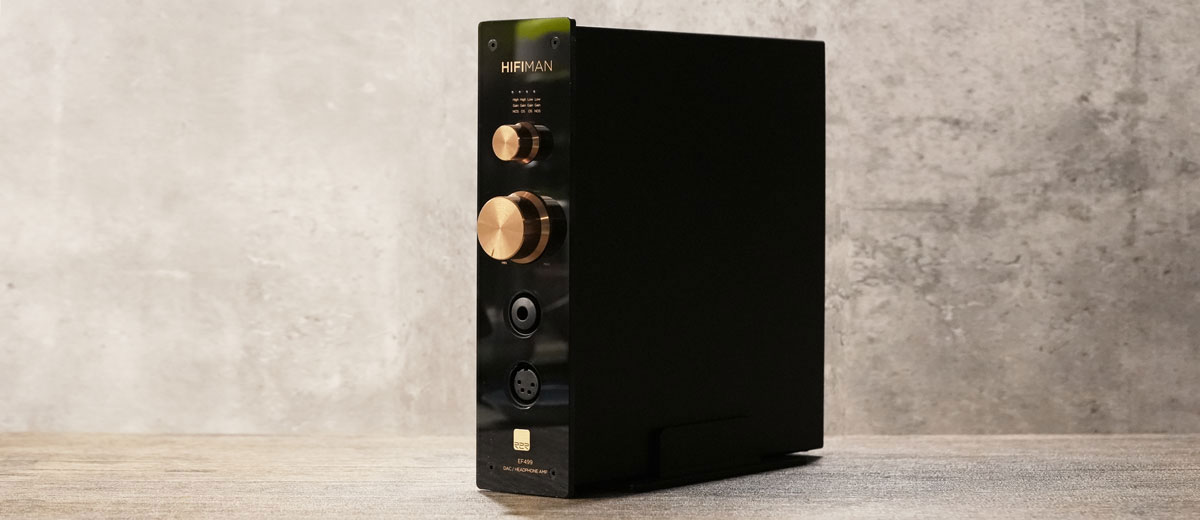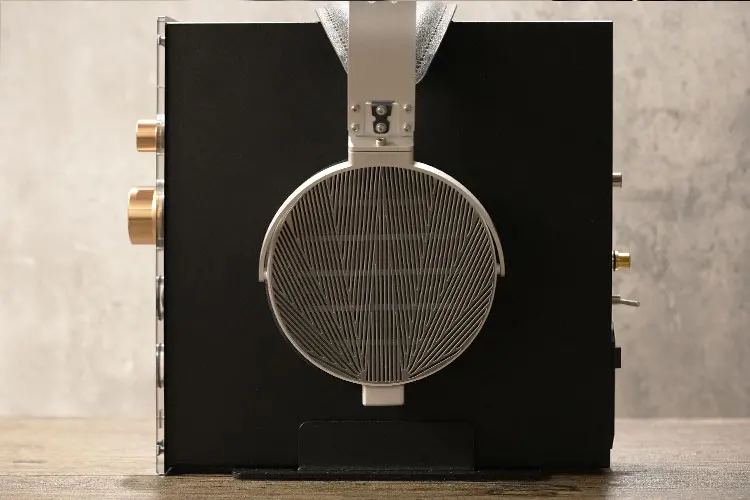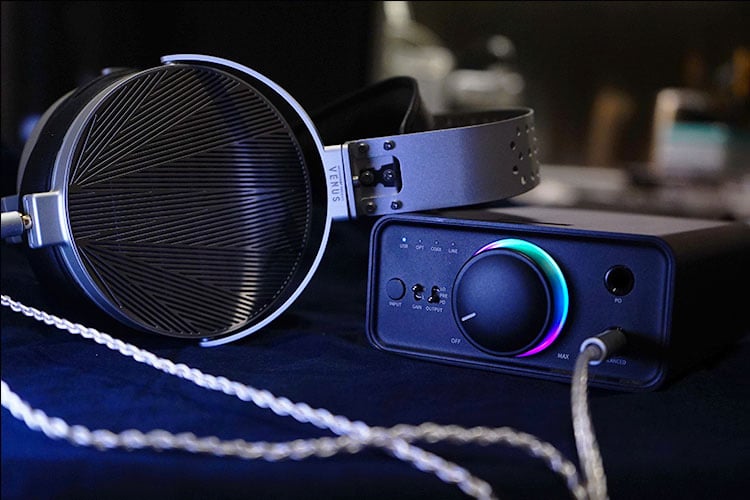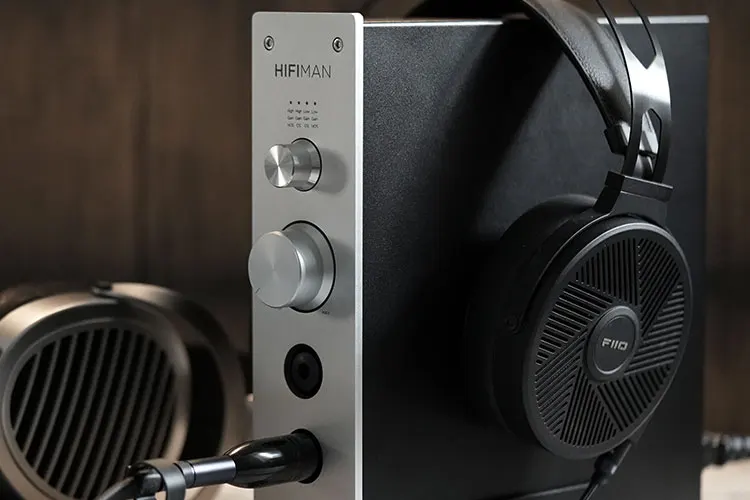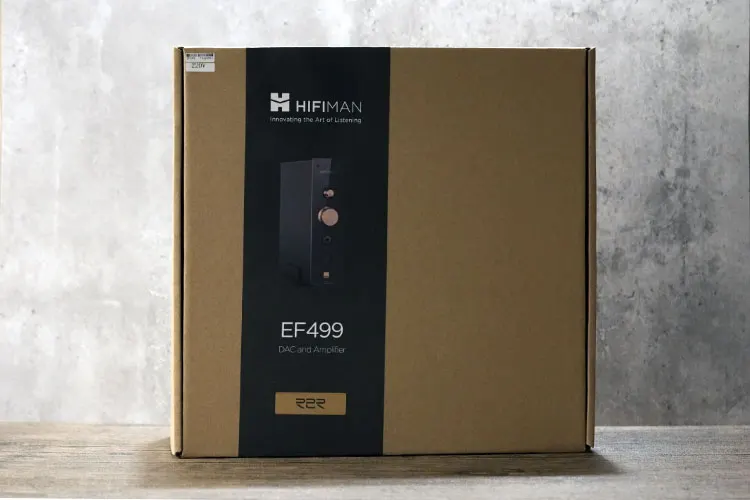Synergy
Efficiency
Background noise is nicely suppressed on the EF499 so it sounds quite quiet on its single-ended output and only has a faint hiss on the balanced output with sensitive cans which could be negligible when music is on.
The design feels more optimized with headphones of higher impedance as the volume is quite high even when you turn the knob just slightly up.
Channel imbalance is detected which means it is not too friendly with very sensitive IEMs as it may get too loud before you get sound on both sides.
Power
The EF499 can output as much as 4.35W from its balanced connection and is one of the more powerful devices within the price range. You should have no issues powering demanding planar headphones in terms of adequate dynamic range.
The single-ended output has a lower 1.28W rating which is also quite sufficient for driving some older headphones in the collection. For example, the HD 650 is smoothly presented, and open sounding.
Pairings
The rather high output power and the NOS/OS switching mechanism mean the EF499 is quite flexible for headphone pairings, in particular planar headphones.
Its rather mid-centric tonality with a nudge in the mid-treble for clarity injects more color to planar headphones resulting in a more mellow, full presentation.
Testing with the HIFIMAN’s Ananda Nano, the EF499 achieves decent dynamics and clear vocal presence. The lows have an airy punch and a rather elaborated decay, whereas the mids are rich and dense, swiftly articulated, and with adequate separation.
When switching to the Moondrop PARA, the EF499 exhibits a more energized and colored presentation in the vocal performances. The bass delivers an impactful punch with good intensity, showcasing strong dynamics and ample speed.
Together with the swift treble response, this combination works particularly well for house music. You get a nice balance with this pairing if you are listening to pop also with its stronger emphasis on the lows and good vocal clarity.
Select Comparisons
FiiO K7
Technical
Last time we compared the EF500 with the K9 Pro ESS from FiiO but the EF499 slashes the price quite a bit and falls under the same bracket as the FiiO K7 DAC and Amplifier.
The FiiO K7 features dual AK4493SEQ decoders and a THX AAA 788+ amping module that delivers a powerful but neutral sound profile.
The K7 can output 2W max on a balanced connection and features an XMOS USB solution, two discreet crystal oscillators for the clock signals, and dedicated NJU72315 volume control chipsets.
Similar to the EF499, the K7 only has two gain levels but with no streamer capability, I will compare the two DAC/amps over a USB connection.
Design
The K7 features a compact body and is adorned with an RGB ring around the volume knob. The front panel includes indicators for the connected sources, as well as dedicated Gain and Output switches.
Both designs are intuitive and modern, yet the heavier EF499 with gold accents feels more premium, and it also doubles as a headphone stand when turned off which expands the functionality.
Additionally, the K7 can function as a preamp. In contrast, the EF499’s XLR output serves as a LO which requires digital volume control for connected speakers or a pre-amp.
Performance
Using the HIFIMAN Ananda Nano, the EF499 sounds more colored than the FiiO K7.
Even though the Ananda Nano is quite sensitive, the higher output power on the EF499 does make some difference for the response speed in the bass and the firmness, which gives a more solid impact for drums and bass guitars.
The tuning and the power both contribute to a more elaborated mid-bass on the EF499 compared to the more conservative and controlled presentation on the K7. The FiiO presentation sounds more defined, especially in the treble, but not as vivid and airy compared to the EF499.
This is more audible at higher volume where the K7 maintains a defined and firm image. The EF499 starts to feel less definitive as the transients are less defined in the treble, but it still maintains good dynamics and a punchy set of lows.
Pairing with the Para gives a similar result, with the EF499 sounding more elaborated in the mids with better density and more colored and vivid-sounding vocals.
The K7 on the other hand extends further in the treble and sounds more defined in the lows even at higher volume, and the vocal is not stressed as much as on the EF499.
There is a stronger sense of definition on the K7, however, the vocals and instruments across the midrange do not come across as airy and naturally delivered.
Between the two amps, the level of stereo imaging sounds similar. The higher output power on the EF499 gives it an edge for dynamics, especially with headphones that require more swing.
I find the tuning on the EF499 more enjoyable with the cans tested as it is noticeably more organic in tone and the K7 comparatively sounds flatter.
HIFIMAN EF500
Technical
The EF500 is slightly more powerful with 4.5W output compared to the 4.35W output on the EF499 testing with 32Ω loads on its balanced output.
The EF499 has a THD+N rating of 0.008% and an S/N ratio of 99 dB, which is expected due to its older chipset. Comparatively, the EF500 scores are quite a bit higher with 117 dB for S/N and THD between 0.0017% to 0.0028% for the HYMALAYA LE chipsets.
On paper, the difference may seem to be huge but when listening the dynamics on the EF499 are almost as good. Rather, it’s the noise control, treble extension, and definition that are marginally weaker compared to the EF500.
Design
Everything except the color theme is the same between the EF499 and EF500. The EF500 feels more well-built with a metallic front panel compared to the EF499’s acrylic panel, though you may find the EF499 classier looking with the black and gold theme.
Performance
Comparing the EF499 with the EF500 over Airplay, the difference between the two devices is quite noticeable however the two also share some similar traits. For example, the overall tuning direction and the classic, mellow R-2R tonality.
However, the EF500 does sound more defined, with stronger transients captured, while the EF499 feels more rounded and shifts the listener’s focus more on the intense, dense mids.
Comparatively, the EF499 also shapes the mid-treble smoother and although there is a small boost in brightness, it feels more natural than the EF500, which captures stronger transients.
Switching to the 6.3mm output and testing with the Dekoni x HIFIMAN Cobalt, a pair of cleanly tuned headphones, the EF500 sounds marginally brighter, airier, and more extended in the treble.
The EF499 pairing with the Cobalt feels more naturally presented, with less emphasis on the upper vocal region and generally more vocal note body.
Testing with the Moondrop Joker which has a V-shaped tuning, the vocal imaging sounds more forward on the EF500 while the EF499 gives a better balance, giving more weight to the vocal body but without pushing the upper mids too forward.
The modern R-2R rendition on the EF500 enhances resolving power, noise control, treble extension, and definition.
The EF500 has good edges when paired with older headphones and sounds more textured. The EF499 has stronger ‘retro’ coloring and the same speedy bass response, which results in better synergy with modern headphones that sound fast and defined but may lack weight in the midrange.
Our Verdict
The HIFIMAN EF499 integrated DAC and headphone amplifier revitalizes the legacy R-2R chipsets from Philips with strong amping power and a modern, easy-to-use, streaming functionality. It sounds mellow and immersive even with demanding headphones.
If you want to experience what an R-2R DAC can do at an affordable price point, or pair a powerful amplifier with demanding headphones, and if your collection of music is mainly CD quality, the EF499 offers great value as an all-in-one entry-level DAC/amp with streaming capability.
HIFIMAN EF499 Technical Specifications
- THD+N (Line out): 0.008%
- Signal to Noise Ratio: 99dB (A-Weighted)
- Maximum Power Output: 4.35WPC@32Ω balanced /1.32 WPC@32Ω unbalanced
- Weight: ~3.37kg

